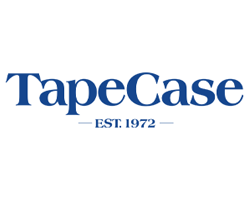Ecommerce Solutions for B2B & B2C Businesses
Enhance your business with ROC Commerce’s scalable ecommerce software solutions.
Driving Ecommerce Excellence for Top B2B & B2C Brands
Leading brands like WeatherTech, Ron Jon Surf Shop, OmniCable, and Coburn’s trust ROC Commerce for its robust ecommerce solutions. Our commerce platform is designed to support complex, large-scale B2B and B2C operations with ease, offering seamless integrations and a consistent shopping experience across channels and devices.








B2B vs. B2C Ecommerce Software
Planning the Roadmap to Ecommerce Success
Ecommerce is moving into the Digital Age, blurring the lines between B2B and B2C Commerce. Propel your business beyond the competition and achieve digital maturity with a rock-solid enterprise-grade ecommerce platform. ROC is designed to integrate with your systems and technologies while scaling for the future, so you can do ecommerce your way — no matter the business model.
B2B Commerce Platform
Give your customers what they’ve been asking for: frictionless, personalized buying experiences for B2B customers. Become their first choice and boost conversion rates with custom ordering capabilities that let buyers navigate your website, search through catalogs, and order in the retail-like fashion they grew to love.
B2C/D2C Commerce Platform
Make buying a breeze and witness rising sales through a unified commerce platform that addresses shoppers’ pain points before they become a problem. ROC Commerce allows you to shorten the customer path to purchase through innovative B2C ecommerce,
checkout, and account functionalities, ensuring a seamless and efficient shopping experience.
B2B & B2C Commerce Solutions
Many of ROC’s clients have a combination of B2B and B2C needs. The beauty of this platform is that it can be used to accommodate both individual clients and businesses. Our AI-powered search tool lets customers quickly find what they need, whether it's a specific type of software, a car part, or a t-shirt. You can also unify customer experiences across all channels with multilingual and multisite capabilities.
Key Ecommerce Platform Features
Advanced features designed to optimize your ecommerce operations, enhancing both your digital storefront and back-office efficiency.
Benefits of the ROC Commerce Platform
Our suite of ecommerce software capabilities empowers businesses to achieve the full potential of their digital storefront.
through new digital sales channels, better conversion rates, and higher average order value.
from omnichannel 24x7x365 ways to quickly interact with your company, find product information, and consistent omnichannel pricing, inventory, and ordering capability.
through sales and customer service deflection allow the sales organization to focus on its core responsibility of selling and serving its customers.
driving additional loyalty and revenue from all customers. Also, protecting businesses from lost salesperson domain knowledge.driving additional loyalty and revenue from all customers. Also, protecting businesses from lost salesperson domain knowledge.
with an ecommerce and digital platform that provides rich business insights transcending just digital interactions. ROC Commerce provides more significant business and customer insights to help organizations better manage their business, find trends, and adjust to the ever-changing market.
ROC Solutions by Industry
Future-proof Your Ecommerce Platform.
Implement only the modules you need today and add new features as your business evolves. Grow at your own pace.
Integrate easily with virtually any existing system, software or data source.
Add or update functionality without starting over.
Ecommerce Personalization Trends
As someone searches the internet for a new pair of boots, they’ll likely come across the pair they added to their cart recently but have yet to purchase. Alternatively, they may stumble upon some stunning, on-trend boots that bear a striking resemblance to the ones they’ve been admiring. This is because today's ecommerce shopping experience is incredibly personalized and tailored to individual preferences.
Ecommerce personalization is undoubtedly a growing trend that won’t be going away. Its significance continues to grow, compelling businesses to pursue technological advancements and reshape how customers engage with their ecommerce sites. From omnichannel strategies to predictive analytics, AI advantages, and more, there are many ways to stay competitive. Adopting cutting-edge personalization techniques improves customer engagement, drives conversions, and fosters lasting brand loyalty.
Discover all the ways to stay ahead of the curve with ecommerce personalization. Learn about the numerous benefits of personalization in ecommerce and how to keep up with this growing trend. Explore the power of AI, predictive analytics, personalized email marketing, omnichannel platforms, augmented reality (AR) and virtual reality (VR), and first-party data, making everything more personalized.
AI-Powered Personalization
This is the perfect time to use AI and avoid being left behind by the competition. Businesses are taking their ecommerce personalization to new heights by tapping into AI’s potential to deliver tailored experiences through product recommendations, dynamic pricing, and chatbot interactions. With AI-powered solutions, businesses can exceed customer expectations and provide customized experiences.
AI Recommendation Engines
AI technology uses advanced machine-learning algorithms to analyze copious amounts of data to understand customer behavior and preferences. This allows businesses to offer real-time personalized product recommendations based on individual interactions. For instance, Amazon now uses AI to power product suggestions for customers, which are visible on the homepage and throughout the shopping journey.
Dynamic Pricing with AI
AI also supports dynamic pricing, allowing businesses to set prices based on demand, customer segments, and competitor pricing. Using machine learning algorithms, AI can analyze data sets, determine current market demands and customer purchasing patterns, and examine competitive pricing to tell businesses the perfect product price.
AI-Driven Chatbots
Moreover, AI-powered chatbots are continuously advancing to provide tailored customer support, addressing inquiries instantly using previous interactions and data-driven knowledge. For instance, AI chatbots can anticipate customers' needs by analyzing their previous orders, resulting in a more personalized experience.
Predictive Analytics for Personalization
Businesses are also leaning into predictive analytics for greater ecommerce personalization. It helps companies to anticipate customer needs and decide their exact course of action. The tool uses historical data, predictive modeling, and trends to optimize inventory and improve demand forecasting.
Forecasting Customer Behavior
Predictive analytics can forecast customer behavior as it learns customers' browsing and purchase history; this data is then used to optimize inventory management and marketing strategies like hyper-targeted, behavior-triggered marketing automation.
Personalization for At-Risk Customers
It can also identify at-risk customers who are likely to churn or not interact with their ecommerce site anymore. Predictive analytics enable businesses to send targeted offers or recommendations. For example, a retailer can use predictive analytics to reduce churn rates by building customer personas, targeting a market segment with more relevant messaging, creating more targeted re-engagement campaigns, and more.
Inventory Optimization Using Predictive Models
Predictive analytics helps optimize stock levels by predicting demand for specific products based on seasonality and trends. For example, a fashion retailer can use predictive analytics to anticipate the demand for summer collections based on past years' trends.
Personalized Email Marketing
Email marketing is becoming more personalized through AI-driven segmentation, dynamic content, and triggered automation. Creating tailored email experiences based on customer behavior and preferences is important. This demonstrates to customers that they are valued and that businesses can provide products based on their preferences, behaviors, and wants.
AI-Driven Email Segmentation
AI can analyze customer behavior, preferences, and purchase history for email segmentation to differentiate audiences. It will then automatically send different email versions to various segments based on customers' past interactions with the brand. For instance, if a customer has been looking at children's clothes before, they may receive an email showcasing the latest fall outfits based on AI-driven email segmentation.
Dynamic Content in Emails
Dynamic content is also trending in terms of email personalization. With this approach, the email's content adjusts in real time based on customer behavior or demographic data. For instance, retailers utilize dynamic email templates that change based on the customer's location or past purchases. So, if a customer lives in Michigan, they will receive an email discussing the events or upcoming promotions for a store or location in Michigan.
Triggered Email Automation
Triggered emails, such as abandoned cart reminders, post-purchase follow-ups, and loyalty rewards, are becoming more personalized with AI. For example, customers may receive an abandoned cart email with customized product recommendations based on their search and purchase history.
Omni-Channel Personalization: Creating Unified Customer Experiences Across All Platforms
It’s not just about personalizing the shopping experience for customers on one device; it's about personalizing across various channels. Businesses are focusing on offering a seamless, unified customer experience across all channels. To achieve this, they are turning to omnichannel platforms designed to create unified customer experiences across websites, mobile apps, social media, and physical stores.
Unified Personalization Across Channels
Customers shopping with a specific brand or company expect their experience with the ecommerce site to be enjoyable, personalized, and consistent across all channels. This means providing a unified, personalized experience that covers all online and offline touchpoints. For instance, a customer browsing the online catalog should receive a customized offer in-store based on their browsing behavior.
Real-Time Personalization Across Devices
Real-time data collection enables businesses to customize content for various devices, ensuring consistent customer experiences. As a result, customers receive personalized recommendations across mobile and desktop platforms.
Social Media Personalization
One of the latest personalization trends in ecommerce is for brands to use personalized social media ads, shoppable posts, and influencer partnerships to reach their target audiences. For instance, personalized Instagram ads can be customized based on a customer's browsing history, showing them ads for items they had been looking at earlier in the day.
Augmented Reality (AR) and Virtual Reality (VR) Personalization
AR and VR technology provide incredible opportunities for personalization. Ecommerce brands now use these technologies to create personalized, immersive shopping experiences that allow customers to visualize products before purchasing. These experiences range from interactive AR try-ons to the ability to view outfits in various colors, styles, and features, enhancing the overall shopping journey.
Interactive AR Shopping Experiences
With AR technology, shopping has become a whole different experience. It enables customers to visualize products in real-world environments, offering personalized product recommendations based on individual preferences. For instance, many businesses use AR-powered virtual try-ons for clothing or accessories.
VR Shopping Experiences
VR technology offers highly immersive and personalized shopping experiences. With VR, customers can virtually enter a store and browse products as if they were in a physical store. For example, they can experience virtual home décor and furniture walkthroughs using VR headsets.
Personalized Product Configurations
AR/VR technologies offer many exciting possibilities. Now, customers can personalize and see products in real time. For instance, using AR/VR technologies, customers can experience bringing their dream car to life in a virtual showroom and choosing their favorite colors, sizes, and features to create a vehicle that's uniquely theirs.
Cookieless Future and First-Party Data Collection
In a cookieless world, there are numerous challenges and opportunities for ecommerce personalization. As the use of customer data grows, businesses face the challenge of complying with privacy regulations while still using data to enhance customer experiences. However, companies are finding ways to deliver tailored experiences while respecting customers’ privacy and adhering to regulations.
Importance of First-Party Data
With more regulations and for those choosing to opt out of cookie tracking, businesses are using third-party cookies less. Instead, they are relying more on first-party data to personalize experiences. This shift in using first-party data has some businesses using loyalty programs and direct customer interactions to collect valuable data.
Contextual Targeting
Contextual targeting is also an alternative to cookie-based tracking. It analyzes the context of the page a customer views to deliver relevant ads and content. For example, a fashion retailer can use contextual targeting to show relevant ads to potential customers on fashion blogs they may read.
Privacy-First Personalization
As privacy regulators like GDPR and CCPA create policies to protect customer privacy and regulate data, the future of ecommerce personalization is also evolving. Businesses are now required to be transparent about data collection. Fortunately, through technologies like implementing cookie consent management systems, companies can allow customers to opt in or out of data sharing and always remain in compliance.
Take the Next Step in Ecommerce Analytics with ROC Commerce
Now is the best time to create a personalized shopping experience for your customers. By employing omnichannel platforms like ROC Commerce, you can leverage data science and analytics to give your customers exactly what they want. Additionally, you can optimize your ecommerce operations, leading to maximized profits.
By teaming up with ROC Commerce, you can use state-of-the-art data tracking and performance tools for personalized marketing, merchandising, and more. We work closely with B2B and B2C partners to develop tailored strategies to create data-driven customized shopping experiences to increase online sales and meet all your ecommerce goals.
If you are a retailer looking for personalized solutions for all your ecommerce needs, contact ROC Commerce now. Contact our team for more information!
